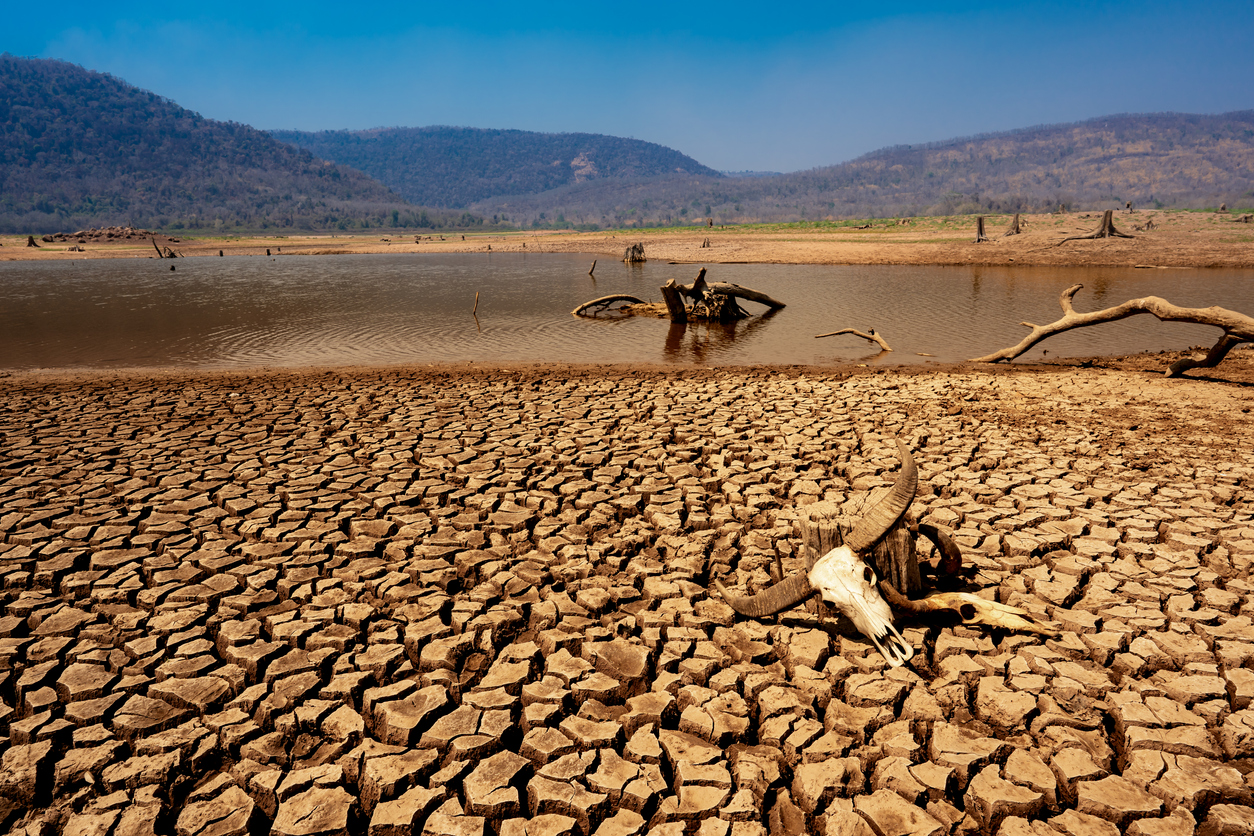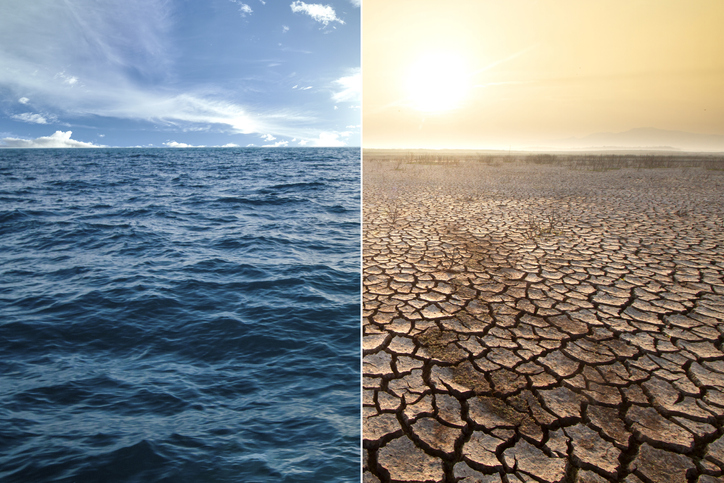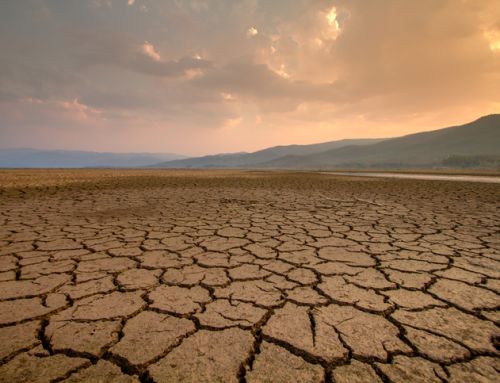Water scarcity is a pressing global issue with far-reaching consequences for human health, economic development, and environmental sustainability. Despite covering about 71% of the Earth’s surface, only a small fraction of this water is accessible for human use as freshwater. As demands for water continue to rise due to population growth, urbanisation, industrialisation, and climate change, the availability of clean and safe water is becoming increasingly limited. This report aims to explore the top ten reasons contributing to water scarcity and examine the World Economic Forum’s predictions regarding water depletion in certain countries by 2040.
Top Ten Reasons for Water Scarcity
1. Population Growth
Rapid population growth puts immense pressure on water resources, as more people require water for drinking, sanitation, and agriculture. The demand for water increases exponentially with population growth, leading to over-exploitation of available water sources.
2. Climate Change
Climate change exacerbates water scarcity through altered precipitation patterns, increased evaporation rates, and changes in the frequency and intensity of extreme weather events such as droughts and floods. These changes disrupt water availability and exacerbate water stress in many regions.
3. Urbanisation
Urbanisation leads to increased water demand for domestic, industrial, and municipal purposes. As more people migrate to urban areas, the strain on existing water infrastructure and resources intensifies, leading to water shortages in cities.
4. Agricultural Water Use
Agriculture accounts for the largest share of global water consumption. Inefficient irrigation practices, such as flood irrigation and over-extraction of groundwater, contribute to water depletion and scarcity. Improving water management practices in agriculture is crucial for addressing water scarcity.
5. Industrial Water Demand
Industrial processes require large volumes of water for manufacturing, cooling, and other purposes. Industrial water demand competes with other sectors for limited water resources, leading to conflicts over water allocation and exacerbating water scarcity.
6. Pollution
Water pollution from industrial discharges, agricultural runoff, untreated sewage, and improper waste disposal contaminates water sources, making them unfit for human consumption and ecological health. Pollution reduces the availability of clean and safe water, exacerbating water scarcity.
7. Inefficient Water Management
Inefficient water management practices, including leaky water infrastructure, unsustainable groundwater pumping, and lack of investment in water conservation measures, contribute to water losses and inefficiencies in water use. Improving water management is essential for addressing water scarcity.
8. Land Degradation
Land degradation, including deforestation, soil erosion, and desertification, reduces the capacity of land to absorb and retain water. Degraded landscapes contribute to reduced water availability and increased vulnerability to droughts and water scarcity.
9. Groundwater Depletion
Over-extraction of groundwater for irrigation, drinking water supplies, and industrial use leads to groundwater depletion and aquifer depletion. Groundwater depletion contributes to declining water tables, land subsidence, and saltwater intrusion, exacerbating water scarcity in many regions.
10. Policy and Governance Challenges
Inadequate water governance, weak enforcement of water regulations, lack of integrated water management policies, and competing water demands from various sectors hinder effective water resource management. Addressing policy and governance challenges is crucial for mitigating water scarcity.
World Economic Forum Predictions and Countries at Risk
The World Economic Forum predicts that water scarcity will worsen in certain countries, leading to critical water shortages by 2040. These countries face significant challenges in managing water resources sustainably and ensuring water security for their populations. Some of the countries identified by the World Economic Forum as facing water scarcity risks include:
- India: Rapid population growth, urbanisation, and agricultural water demand contribute to water stress in India. Groundwater depletion, pollution, and inefficient water management exacerbate water scarcity in many regions of the country.
- South Africa: South Africa faces water scarcity challenges due to climate change, droughts, and inefficient water use practices. Competition for water resources between urban, agricultural, and industrial sectors further strains water availability in the country.
- China: China’s rapid economic growth and industrialisation have led to increased water demand and pollution, contributing to water scarcity in many regions. Groundwater depletion, water pollution, and inefficient irrigation practices pose significant challenges to water management in China.
- United States: Certain regions of the United States, such as the southwestern states and California, face water scarcity risks due to population growth, urbanisation, and agricultural water demand. Droughts, groundwater depletion, and competing water demands exacerbate water stress in these regions.
- Australia: Australia experiences water scarcity challenges due to its arid and semi-arid climate, coupled with droughts and declining rainfall in certain regions. Competition for water resources between urban, agricultural, and environmental uses poses significant water management challenges in Australia.
- Iran: Iran faces water scarcity risks due to its arid climate, inefficient water use practices, and over-exploitation of groundwater resources. Droughts, water pollution, and competition for water between agricultural and urban sectors exacerbate water stress in Iran.
- Pakistan: Pakistan experiences water scarcity challenges due to its reliance on irrigation for agriculture, population growth, and inefficient water management practices. Groundwater depletion, water pollution, and competing water demands pose significant risks to water security in Pakistan.
- Egypt: Egypt faces water scarcity risks due to its dependence on the Nile River for water resources, population growth, and inefficient water use practices. Pollution, climate change impacts, and competition for water between Egypt and upstream countries exacerbate water stress in the country.
- Mexico: Certain regions of Mexico face water scarcity challenges due to population growth, urbanisation, and agricultural water demand. Droughts, groundwater depletion, and inefficient water management practices pose significant risks to water security in Mexico.
- Brazil: Brazil experiences water scarcity challenges in certain regions due to deforestation, land degradation, and competition for water resources between urban, agricultural, and environmental uses. Droughts, water pollution, and inefficient water management exacerbate water stress in Brazil.
Conclusion
Water scarcity is a complex and multifaceted challenge with significant implications for human well-being, economic development, and environmental sustainability. Understanding the top reasons contributing to water scarcity, including population growth, climate change, urbanisation, and inefficient water management, is essential for addressing this global issue effectively. The World Economic Forum’s predictions regarding water scarcity risks in certain countries highlight the urgency of taking proactive measures to manage water resources sustainably and ensure water security for present and future generations. Collaborative efforts involving governments, policymakers, businesses, and civil society are crucial for implementing integrated water management strategies, promoting water conservation, and building resilience to water scarcity risks. By addressing the root causes of water scarcity and prioritising water sustainability, we can work towards achieving water security and ensuring access to clean and safe water for all.
Water is LIFE!











